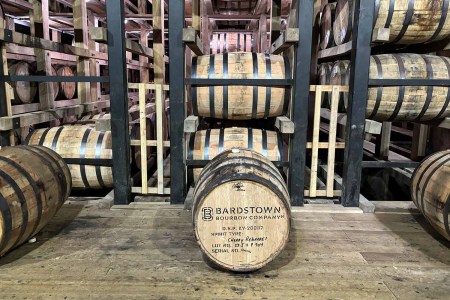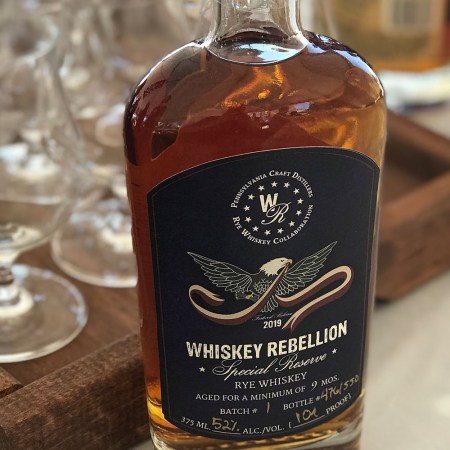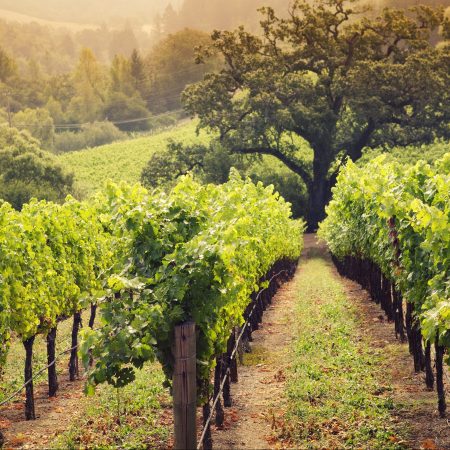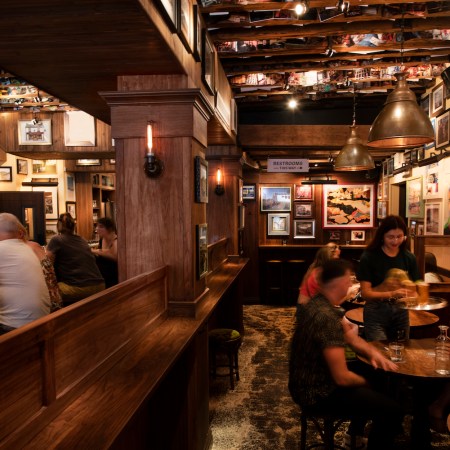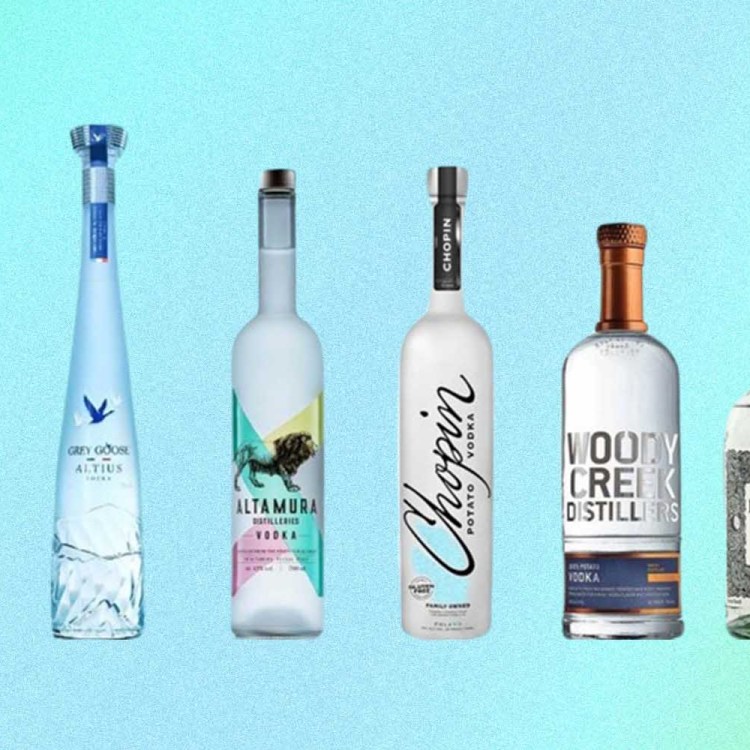With the average daily spend in Napa clocking in at $281 — without accounting for the cost of lodging (if you pay for a hotel, the average spend will be $474 per day) — perhaps it’s time for thirsty explorers to check out one of the less famous but equally compelling wine, beer, cider and spirits trails across the country. In addition to not battling crowds in Napa and other well-trod regions, you’ll leave vacation without a string of creditors on your heels. And because many of these regions can’t rely on drinking dollars alone to grease their wheels of commerce, other recreational opportunities abound.

Wine: Get Lost in Northern Idaho
Idaho has been on the come-up as a wine destination for years now, thanks to its auspicious terroir. Winemaking there is progressive — women run close to 50% of the 70+ wineries and cideries — and the vineyards are set in some of the most breathtaking natural landscapes in the world.
It all got started in the Lewis-Clark Valley in the 1860s. Today, the 479-square-mile Lewis-Clark AVA offers wines made from 20 unique varietals. And if you’re looking for a quieter corner of the state with plenty of outdoor recreation opportunities, Lewis-Clark is where it’s at.
“The Lewis Clark Valley AVA is a hidden gem for outdoor and wine enthusiasts,” says Moya Dolsby, the Idaho Wine Commission executive director. “It’s slightly remote, which is part of what makes it so special. I always feel I’m in on a great secret when spending time in the AVA because it’s such a stunningly beautiful area with award-winning wineries, yet it’s more spacious and less crowded than some well-known wine regions. There’s nothing better than enjoying a day outside on the water and then sipping wine while taking in the area’s views.”
Start your day at the Hells Canyon National Recreation Area, the deepest river gorge in the country. The 10-mile-wide canyon offers whitewater rafting, jetboating and fishing. Adjacent to the gorge are a range of hiking opportunities at Hells Gate State Park, the South Asotin Trail and Moscow Mountain.
Often referred to as the banana belt of the Pacific Northwest, this pocket of Idaho experiences more sun and warm weather than anywhere else, which helps ensure the syrah, Cabernet Franc, cabernet sauvignon, merlot, sangiovese and more ripen to perfection. Dolsby explains that the Clearwater River defines both the quality of the grapes (the tempering effect of the water creates a warmer climate for the grape vines in the winter and cools the grapes during the summer) and the way of life there. After a busy day of excursions on the water, explorers can see and taste Clearwater’s influence at Rivaura Winery, which rests on rolling hills with views of the river, and Basalt Cellars Winery, perched on Idaho’s border with Washington.

Cider: Go North to the Hudson Valley in New York
The formal production of hard cider dates back to Roman times, when Julius Caesar discovered Celts fermenting crabapples. In Europe, cider culture evolved over the ensuing centuries, and soon after landing at Plymouth, colonists began planting apple trees. Weak fermented cider became the drink of choice for most Americans (even children) because water was unsafe.
Cider eventually fell out of favor, and during Prohibition, farmers in regions like the Hudson Valley in New York (where the remaining U.S. cider production was based) yanked out their cider trees and replaced them with dessert apple trees and other crops. It wasn’t until the early 21st century that people like Susan Manning and Dough Doetsch decided to revive the traditional cider culture that helped define the region for so many centuries.
Their work was inspired by the past and the future, hoping to honor agricultural history while also contributing to the revitalization of their pocket of the Hudson Valley. Doetsch’s grandparents and great-grandparents were subsistence farmers in Callicoon who lived off the land and made cider. Now, Seminary Hill is the world’s first energy-efficient Passive House-certified cidery, with 12 acres of organic orchards, where 60 varieties of apples and pears thrive. Their ciders run the gamut from easy-drinking sweet (the Cackling Hen) to bone dry (Delaware Dry).
“When we started Seminary Hill, we were total neophytes,” Manning says. “What’s been so fun is joining other new entrepreneurs in revitalizing the Sullivan Catskills. Back in the day, this was the Borscht Belt, but that business had declined by the 1970s. Over the last 20 years, young creatives from Brooklyn have rediscovered the area, and there has been a boom in new businesses that offer an experience that’s proudly local, intensely sustainable and authentically evokes Catskills heritage.”
Seminary Hill, which also houses a chic boutique hotel and farm-to-table restaurant in a cathedral-style room with sweeping views of the orchard and Delaware River Valley, embodies the new ethos and serves as an excellent jumping-off point for exploration. Other like-minded Sullivan Catskills cideries producing terroir-driven fermented apple juice include Forthright Cyder & Mead and Stickett Inn Cider. And there’s a thriving community of other producers to explore, from breweries to distilleries, on the Sullivan Catskills Beverage Trail.
Seminary Hill partners with The Outside Institute, a nature-centric organization that aims to help people reconnect with the healing and transformative power of the wild, something that Laura Chávez Silverman loves sharing with others through forest immersion, foraging and other programs.
“Being outside helps mitigate the modern condition by inviting us to slow down and immerse ourselves in beauty,” Silverman says. “It taps into something primal in everyone. From the river to the mountains, from the birds to the flowers, from the mushrooms to the moths — these are the things that inspire awe in me and a great appreciation for the interconnectedness of all beings. I wish for visitors to take away joy, wonder, a feeling of belonging, a sense of homecoming and a desire to return again and again.”

Whiskey: Head to Jackson Hole in Wyoming
Jackson Hole is considered one of the last remaining vestiges of wild and rugged Old West living, and the people there (correctly) take their whiskey and hiking equally seriously. The valley floor in Jackson Hole encompasses about 48 miles and rests at 6,779 feet above sea level in the north and 6,069 feet above sea level in the south. The town of Jackson itself was founded by mountain-climbing explorers in what was then the Oregon territory.
“Jackson sits in the epicenter of one of the most scenic valleys in America, with mountain ranges surrounding,” says David DeFazio, co-founder of Wyoming Whiskey, the state’s first legal distillery.
The Kentucky Bourbon Trail Just Expanded to 46 Distilleries
It’s not as abrupt as it appearsWyoming Whiskey’s mission is to showcase and reflect the outstanding beauty and possibility of the state and its wild spaces. Their Wide-Open Spaces series blends long-aged bourbon whiskeys from grains grown in the Big Horn Basin. As well, the series benefits Wyoming’s national parks, Grand Teton and Yellowstone, with each new National Parks Series release benefitting a specific park foundation.
Wyoming Whiskey’s craft production operation is perched in the Big Horn Basin, which is ideal for growing grains. DeFazio explains that the Big Horn Basin’s high-desert, dry climate makes for higher-quality grain with higher levels of protein. To truly understand what’s in your glass, DeFazio says you need to get out into the backcountry to walk through the terroir that defines the flavors and aromas. But its heartbeat is in Jackson, where a thriving cultural arts center and the area’s abundant hiking opportunities draw visitors from across the world.
The Grand Teton National Park towers over the northwestern portion of Jackson Hole, and the Snake River runs through the Valley after starting its journey in Yellowstone National Park. The duo dominates the Greater Yellowstone Ecosystem, which is one of the few large and intact ecosystems in Earth’s northern temperate zone, with accompanying packs of moose, bear, elk, bison, mountain lions and bighorn sheep to prove it.
“Grand Teton offers alpine lakes, waterfalls, rock climbing and some of the most iconic and challenging ski descents in the country,” DeFazio says. “If you can dream it, the Tetons can provide it, whether that’s pushing you to the limit of your abilities or ending the day fishing in pristine waters for trout.”
But Wyoming Whiskey isn’t the only beverage game in town. Jackson Hole Still Works crafts spirits from Wyoming-grown grains and features artwork from up-and-coming local artists. The artists get paid directly for their work, and portions of every bottle case go to local arts organizations. Don’t miss Snake River Brewing, the state’s oldest brewery, with cozy living-room style pub food (think Wyoming bison and beef chili and scratch-made pretzels served with killer queso), and games like cornhole, darts, foosball and Golden Tee Golf.
Beer and More: Get Hopped Up in Williamsburg, Virginia
Williamsburg was founded as Virginia’s capital in 1699, and has had, for its size, an outsize influence on the history of the country ever since. The best place to start the exploration is Colonial Williamsburg, the country’s largest outdoor living museum in America. It tells the story of the beauty, horror, simplicity and violence of life in Williamsburg in the early 1700s, from the lives of the people who were brought there by force, to the newcomers who came there of their own free will to learn a craft and build a life. There are several itineraries to explore from The American Indian Experience to Foodies to Military History Buffs.
Early settlers spent most of their time building forts and establishing commerce in the area, but they also immediately began brewing beer, distilling and planting vines for wine. Drinking in Williamsburg is technically a historical activity, so you can chalk a bit of a bender up to research.
“8 Shires Colonial Distillery is the most authentic historical distillery in the world,” says Tucker Casanova, who as general manager of 8 Shires is obviously slightly biased. “The seeds that would grow into the America we know today were planted in 1607 at Jamestown, Virginia. That settlement was also the birthplace of American Spirits. 8 Shires Distillery continues that tradition by following the history and bottling it in the form of authentic colonial-style spirits.”
The bustling town of 16,000 residents is part of the Williamsburg Tasting Trail, which was created to honor the region’s rich culinary and beverage landscape. In addition to 8 Shires, you can check out a dozen other craft beverage producers, including Williamsburg’s oldest modern brewery, Alewerks Brewing Company, or the four wineries on the Colonial Virginia Wine Trail.

Wine: Skip Napa and Head to California’s Lake County
Wine and terroir —the French term used to describe the effect of soil, climate and terrain on a wine’s flavor — go hand in hand. But there are few places where it’s as explicitly clear as the Lake County AVA in California. Lake County spans about 1,329 square miles and is twice the size of Napa County. It’s mountainous and rugged, with around 65,000 full-time residents and eight wine sub-regions, each with distinct microclimates.
And while the region was named for Clear Lake, the oldest and largest natural freshwater lake in the Golden State, the most distinct and defining feature of the area is arguably Mount Konocti. Standing at 4,305 feet, it towers over Clear Lake and the entire AVA. The primarily dacitic lava dome dates back 480,000 years, though the majority of it was formed 350,000 years ago. The volcano last erupted 11,000 years ago, and while Mount Konocti is dormant, it is not considered extinct.
The sub-region most shaped by Mount Kolocti’s influence is the 32,215-acre Red Hills AVA. Remnants of the volcano’s eruptions define the terrain here, with deep soil that includes black obsidian, quartz crystals and volcanic gravel. The elevations range from 1,350 to more than 3,700 feet above sea level, with vineyards planted at up to 2,600 feet.
There are 25 wineries to visit in Lake County, and the vibe in the tasting rooms is as laid-back and vineyard-centric as wineries in Napa feel gleaming and intense. The pours in Lake County are a lot more wallet-friendly, too. Everywhere, the volcanic richness of the soil permeates the wine, and the earthiness of the people defines the experience. At the Italian-inspired Rosa D’Oro Vineyards, visitors can sample rosato, sangiovese, nebbiolo, sagrantino and more, all starting at $17.50 a pop. Domaine Helena, with its award-winning cabernet sauvignon, is more classic California.
A seven-mile hike up to the volcano’s summit will wind past the site of a plane crash and an abandoned historic cabin where widow Mary Downen lived for decades in the early 20th century. It will also deliver some of the best vistas in the state. “Those willing and fit for a moderately strenuous hike are rewarded with jaw-dropping views,” says Debra Sommerfield, president of the Lake County Winegrape Commission.
For everyone else, she recommends joining the hordes of people taking strategic selfies with Mount Konocti in the background or paddling a kayak on Clear Lake. Lake Air Adventures allows those who want a bird’s eye view of the region four different flight options, starting at $125 per person.
There’s a lot of country to explore: why go where everyone else has been?
Join America's Fastest Growing Spirits Newsletter THE SPILL. Unlock all the reviews, recipes and revelry — and get 15% off award-winning La Tierra de Acre Mezcal.

